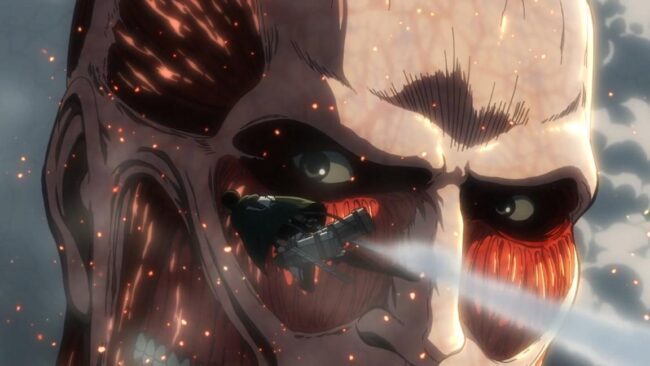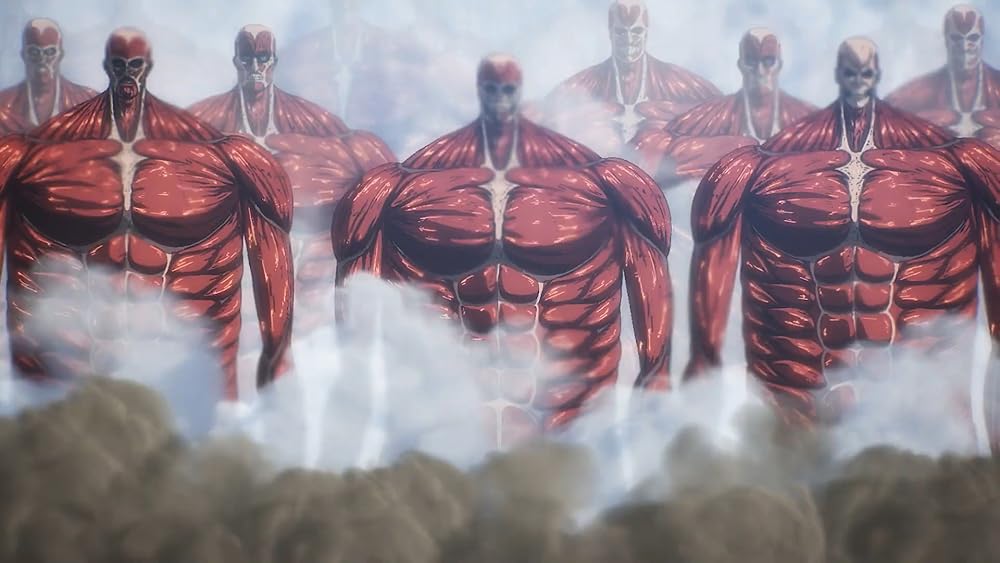The Colossal Titan stands as one of the most iconic and fearsome figures in modern anime history. As a central figure in the global phenomenon Attack
The Colossal Titan stands as one of the most iconic and fearsome figures in modern anime history. As a central figure in the global phenomenon Attack on Titan (Shingeki no Kyojin), this gigantic humanoid is not just a creature of raw destruction—it embodies the show’s themes of power, fear, and humanity’s struggle against overwhelming odds.
In this article, we’ll explore the origins, design, abilities, and narrative significance of the Colossal Titan. We’ll also examine the human characters behind this monstrous form and how it helped shape the epic story of Attack on Titan from beginning to end.
Origins of the Colossal Titan
The Colossal Titan first appears in the very first episode of Attack on Titan, making an unforgettable entrance by looming over the outer walls of the Shiganshina District before smashing them apart. Standing at an intimidating 60 meters tall, it dwarfs even the largest Titans in the series. From that moment, it became a symbol of destruction and the inciting force for the series’ grim and complex plot.
Behind the terrifying form of the Colossal Titan is a human wielder—initially, Bertholdt Hoover, a quiet and unassuming member of the 104th Training Corps. Later in the series, the power of the Colossal Titan is passed on to Armin Arlert, another central character, giving the Titan a new symbolic and narrative direction.
Design and Appearance
The Colossal Titan is instantly recognizable due to its skinless, muscle-exposed design, inspired by anatomical muscle illustrations. Its face lacks a nose and features deep-set eyes, giving it an eerie, emotionless expression. Steam constantly rises from its body due to the immense heat it generates, adding to its monstrous aura.
Unlike other Titans that resemble distorted humans, the Colossal Titan appears more mechanical and symmetrical. Its muscle tissue is exposed, emphasizing both the raw power and grotesque nature of its existence. The design, credited to Hajime Isayama (the creator of Attack on Titan), reflects the central theme of dehumanization and fear.
Abilities and Powers
The Colossal Titan is not just large—it’s devastating. Its size gives it the ability to cause massive destruction with a single motion. However, what truly sets it apart is its unique set of powers:
1. Explosive Transformation
Upon transforming, the Colossal Titan creates a powerful explosion capable of wiping out entire city blocks. This explosion releases intense heat and kinetic energy, making the transformation itself a weapon.
2. Steam Emission
The Titan can emit scalding steam from its body to repel attackers. This defense mechanism is so strong that it can burn or even incinerate anything within close range, making it nearly untouchable in battle unless weakened or distracted.
3. Sheer Size and Strength
At 60 meters tall, the Colossal Titan possesses overwhelming physical power. Its kicks and swings are capable of toppling buildings and killing numerous enemies in one move. The Titan’s size also grants it a significant advantage in psychological warfare—few can remain calm when confronted by such a towering foe.
4. Limited Mobility
Despite its power, the Colossal Titan’s immense size comes with a downside: slow movement. It lacks the agility of smaller Titans, making it vulnerable if opponents can get close enough to exploit its limited speed.
Bertholdt Hoover: The First Colossal Titan in the Story
Bertholdt Hoover is the original inheritor of the Colossal Titan’s power during the main events of Attack on Titan. Introduced as a quiet and soft-spoken character, Bertholdt conceals his true identity for much of the early story. Along with Reiner Braun (the Armored Titan), he infiltrates human society as a spy to gain information and strike when the time is right.
Bertholdt’s inner conflict is a recurring theme—he struggles with the morality of his actions, especially as he bonds with his comrades in the Training Corps. When his identity is revealed, his role becomes more complex. No longer just a monster, he is portrayed as a tragic figure caught in the tides of war, manipulation, and ideology.
His most devastating attack occurs during the battle for Shiganshina, where he transforms in midair, creating a massive explosion that levels half the district. Bertholdt eventually dies in this battle, and his Titan power is inherited by Armin Arlert.

Armin Arlert: A New Direction for the Colossal Titan
Armin’s acquisition of the Colossal Titan marks a dramatic shift in its narrative role. Unlike Bertholdt, Armin is a thinker and strategist rather than a soldier. His transformation into the Colossal Titan is not just a physical change but a symbol of the loss of innocence and the burdens of power.
The moment Armin inherits the Titan is one of the most emotionally charged in the series. Levi is forced to choose between saving Armin or Commander Erwin Smith—ultimately picking Armin, much to the controversy of fans and characters alike. From then on, Armin grapples with the responsibilities that come with wielding such destructive potential.
Armin uses the Colossal Titan’s explosive transformation in key battles, including the final confrontation against Eren Yeager. His transformation remains devastating, but he uses it sparingly, always mindful of the human cost.
Symbolism and Themes
The Colossal Titan is more than a weapon—it’s a metaphor for overwhelming, often senseless destruction. Its power reflects the dangers of unchecked might and the dehumanizing effects of war. When Bertholdt uses it, it represents betrayal and ideological warfare. With Armin, it symbolizes the heavy price of survival and leadership.
In many ways, the Colossal Titan parallels the development of the characters who wield it. Bertholdt’s quiet demeanor masks a devastating power, while Armin’s gentle intellect is challenged by the need to make ruthless decisions. The Titan acts as a mirror, revealing the inner struggles of its inheritors.
Impact on Pop Culture
Since its debut, the Colossal Titan has become a symbol of anime horror and awe. Its appearance in the opening scene of Attack on Titan is one of the most memorable moments in anime history, capturing viewers’ attention worldwide.
The Titan has appeared in numerous pieces of merchandise, including statues, action figures, and even themed food products in Japan. Its image is instantly recognizable even to those who haven’t watched the series in full, proving its impact on pop culture.
The Colossal Titan has also inspired fan art, cosplay, memes, and parody across the internet. It’s often used as a shorthand for something overwhelmingly large or fearsome.
Final Appearance and Legacy
In the final arc of Attack on Titan, Armin uses the Colossal Titan in battle against Eren Yeager, who has fused with the Founding Titan and become an existential threat to the world. Armin’s transformation is vital in helping the remaining survivors stop Eren’s genocide-level plan, the “Rumbling.”
This final battle underscores the complex morality of the series. Even the Colossal Titan, once a symbol of blind destruction, is wielded in an effort to save humanity. Its legacy is one of terror, tragedy, and transformation.
FAQs About the Colossal Titan
1. How tall is the Colossal Titan?
The Colossal Titan stands at 60 meters (approximately 197 feet), making it one of the tallest Titans in the series.
2. Who are the known inheritors of the Colossal Titan?
Bertholdt Hoover is the original inheritor during the main story. After his death, Armin Arlert becomes the second inheritor.
3. Why is the Colossal Titan so powerful?
Its main strengths are its enormous size, explosive transformation, and the ability to emit scalding steam. These abilities make it devastating in both offensive and defensive situations.
4. Why did Armin inherit the Colossal Titan?
After a deadly battle with Bertholdt, Armin is mortally wounded. Levi chooses to save him over Erwin by using the Titan injection, giving him the power of the Colossal Titan through Bertholdt’s consumption.
5. Is the Colossal Titan stronger than the other Titans?
While not the most versatile, it’s among the most destructive. Its explosive transformation and immense scale give it unmatched power in certain situations, though it lacks the speed and agility of other Titans.
6. What does the Colossal Titan represent in the story?
It symbolizes overwhelming force, destruction, and the burden of power. Depending on its wielder, it also represents internal conflict, guilt, and sacrifice.
7. Can the Colossal Titan regenerate like other Titans?
Yes, it has regenerative abilities like other Titans. However, its steam emission can slow regeneration if overused.
8. What is the significance of the Colossal Titan’s first appearance?
Its first appearance marks the end of peace for the people inside the walls. It shatters the illusion of safety and sets the plot of Attack on Titan into motion.
Conclusion
The Colossal Titan is more than a towering monster—it is a pivotal element in one of the most compelling anime narratives ever told. Whether as a tool of war, a symbol of moral complexity, or a source of dread, its presence looms large over Attack on Titan. As fans look back on the series, the image of the Colossal Titan breaching the wall remains one of the most chilling and unforgettable moments in anime history.
More Info: infromednation




COMMENTS